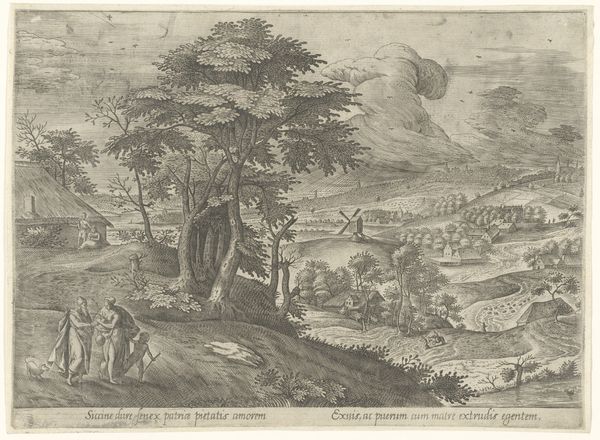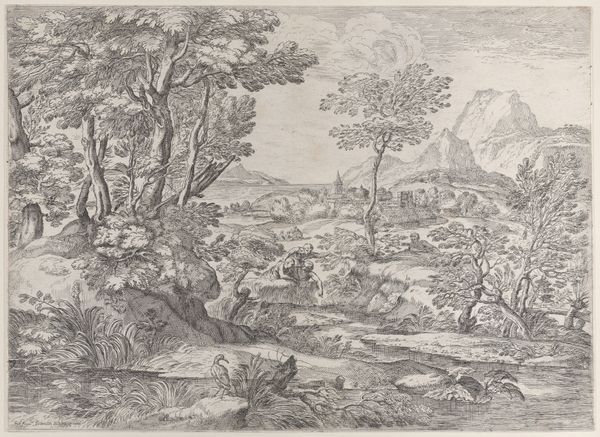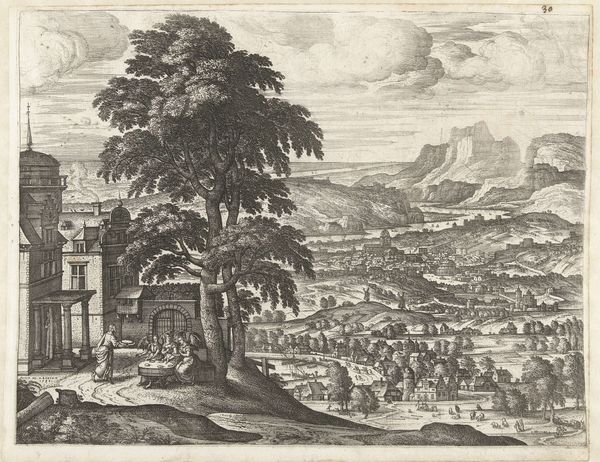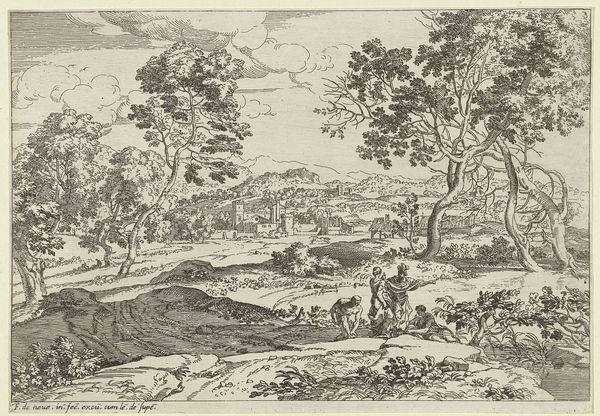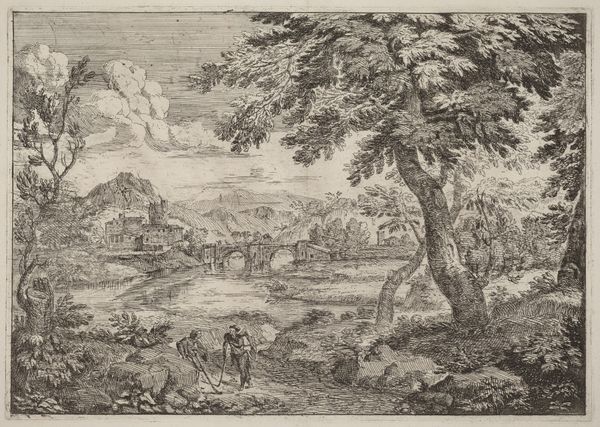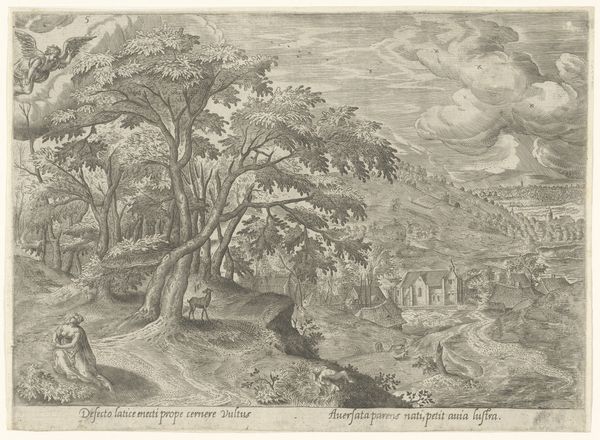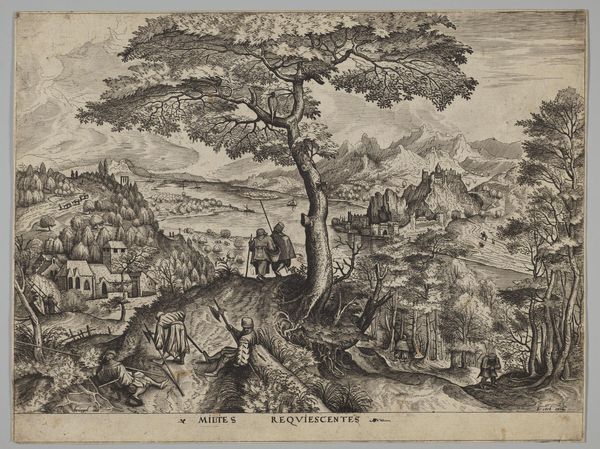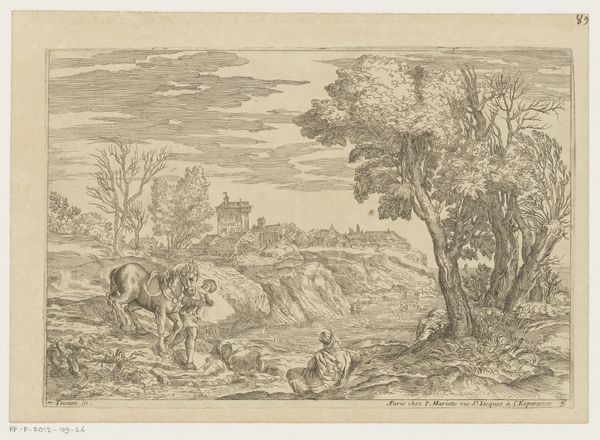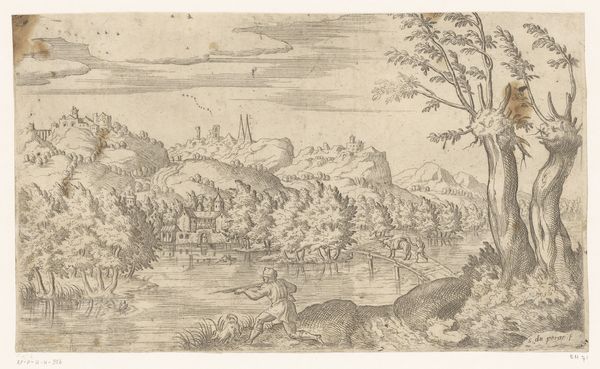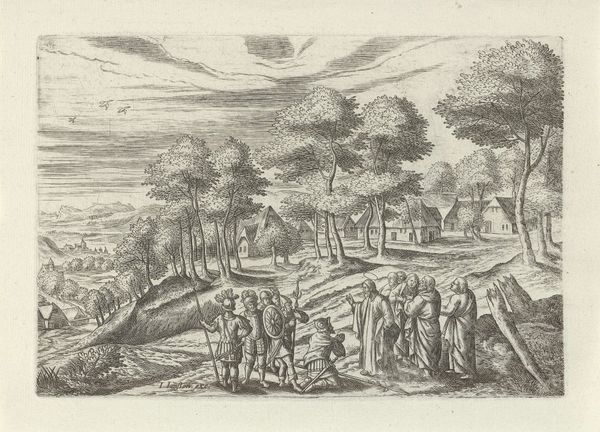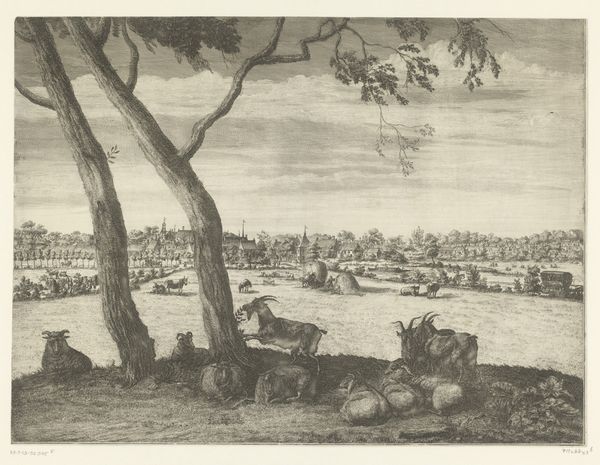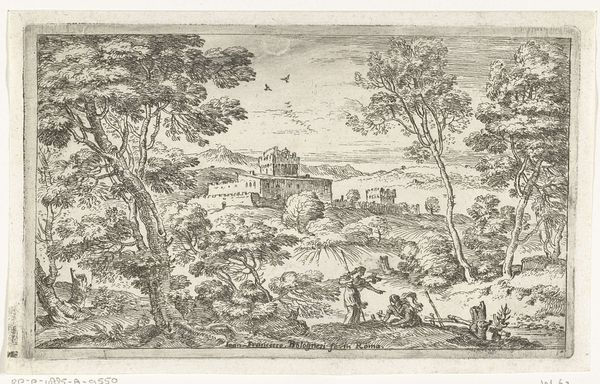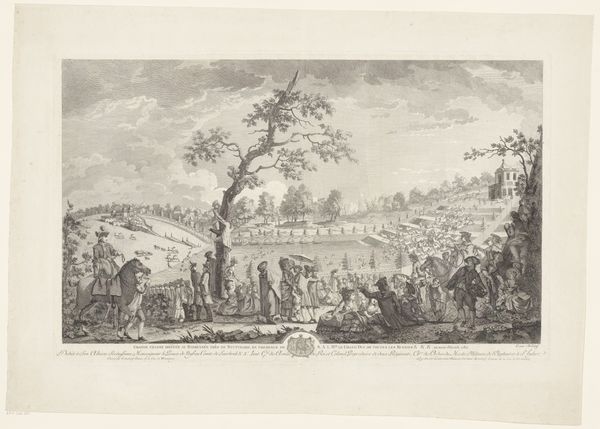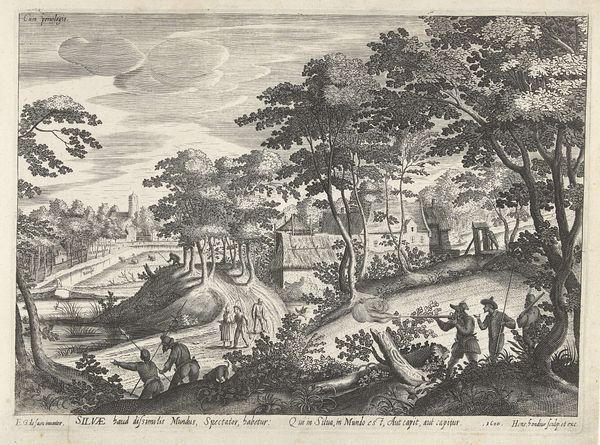
print, etching
# print
#
etching
#
landscape
#
etching
#
northern-renaissance
Dimensions: height 210 mm, width 289 mm
Copyright: Rijks Museum: Open Domain
Philips Galle made this print, Heilige Geneviève trekt het bos, sometime before his death in 1612 using an engraving technique. Engraving on metal like this is an indirect process; the artist carves lines into a plate, applying ink that then transfers to paper when pressed. The quality of the marks in this print –notice the fine, clear lines, precisely placed–speaks to Galle's mastery of this reproductive method. The material qualities achieved through engraving are particularly well-suited to his subject matter: a serene landscape populated by figures and animals. The process of engraving allowed Galle to carefully render the textures of the sheep's wool and the varied foliage of the forest, bringing the scene to life with an extraordinary degree of detail. In Galle’s time, prints were the primary way that images circulated. As a master printmaker, he was deeply embedded in a network of labor, politics, and consumption. His artistic skill, combined with the mechanical process of printmaking, made art accessible to a wider audience, blurring the lines between fine art and craft.
Comments
No comments
Be the first to comment and join the conversation on the ultimate creative platform.
